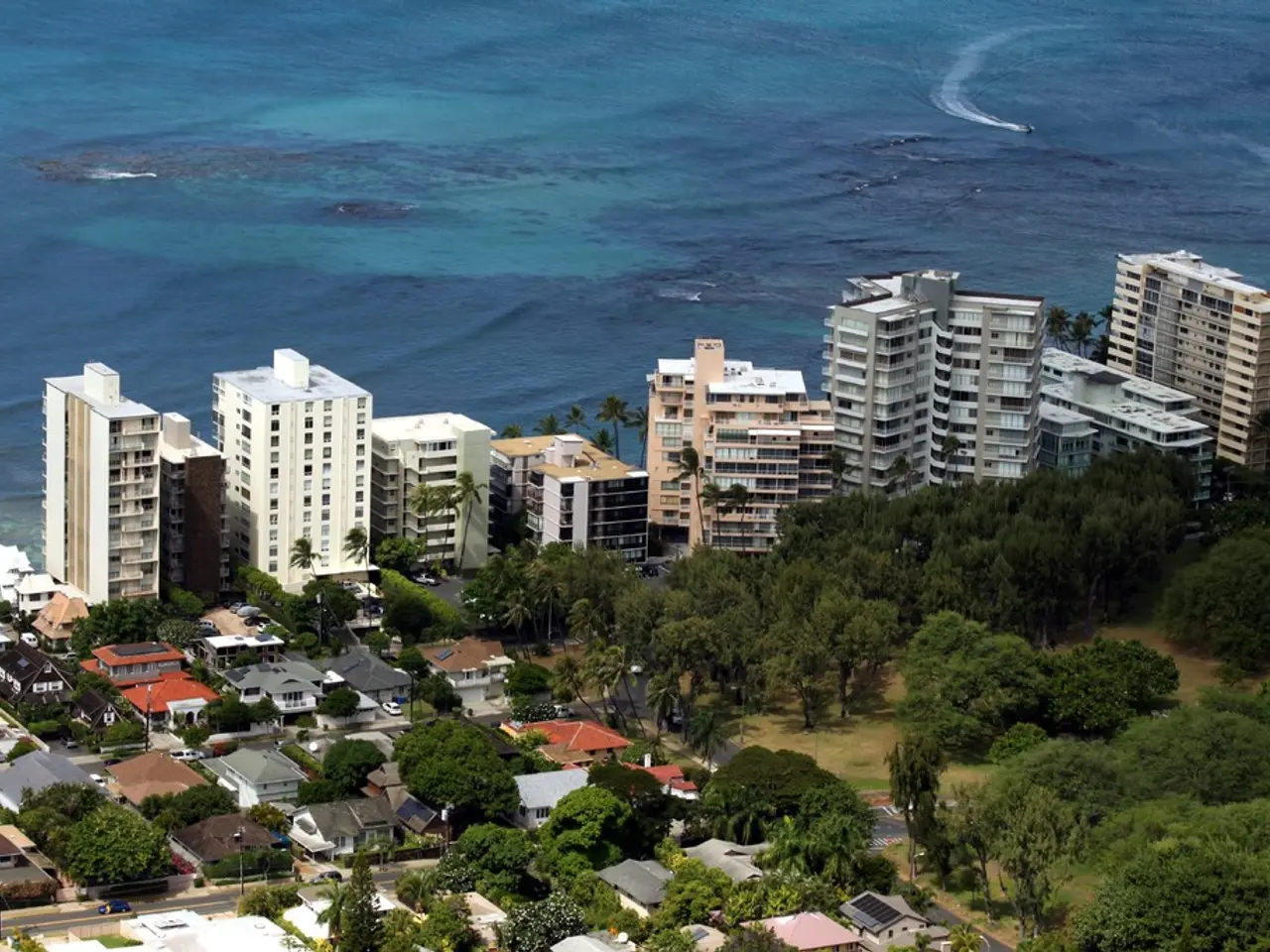Restrictions on Swimming in Öjendorf Lake Due to Presence of Blue-Green Algae - Lake Öjendorf Prohibits Swimming due to Presence of Blue-water Algae
The Öjendorfer See in Hamburg, Germany, has been closed for swimming due to the detection of blue-green algae during a recent water test. The Hamburg-Mitte district office announced the swimming ban, which applies to both the north and south sides of the lake.
Blue-green algae, also known as cyanobacteria, can pose health risks to humans and animals. Exposure to these toxins produced by the algae can cause a range of symptoms, from minor effects such as skin irritation, headaches, and mild gastrointestinal upset, to more severe symptoms including vomiting, neurological effects, liver damage, respiratory problems, and in extreme cases, potentially life-threatening outcomes like respiratory distress, liver failure, or cardiac arrest [1][2][3][4].
Blue-green algae blooms typically develop in nutrient-rich, warm, and calm water conditions, which can occur in lakes like Öjendorfer See during summer months. These blooms may appear as greenish, blue-green, or even brownish scum on the water surface and sometimes emit a musty odor [1].
Authorities usually recommend avoiding contact with water showing visible algae blooms, not letting children or pets play with scum near shores, and showering immediately after any contact with natural waters to reduce risk [1][3]. Treating blooms with herbicides is hazardous as it releases more toxins into the water [3].
It is important to note that the health risks associated with blue-green algae exposure can vary, and the specific risks depend on the type of algae, the concentration of toxins in the water, and the duration and method of exposure.
The swimming ban on the Öjendorfer See remains in place until further notice, and the Hamburg-Mitte district office will continue to monitor the water quality closely. For more information on blue-green algae and its potential health risks, please consult the local health authorities or reliable online resources.
[1] Environmental Protection Agency. (2021). Blue-green algae: What you need to know. Retrieved from https://www.epa.gov/nutrient-policy-data/blue-green-algae-what-you-need-know
[2] World Health Organization. (2019). Cyanobacteria and human health. Retrieved from https://www.who.int/water_sanitation_health/water-quality/guidelines/chemicals/cyanotoxins/en/
[3] Centers for Disease Control and Prevention. (2021). Recreational water illnesses: Blue-green algae. Retrieved from https://www.cdc.gov/healthywater/swimming/diseases/algal-blooms.html
[4] Mayo Clinic. (2021). Blue-green algae (cyanobacteria) exposure and toxicity. Retrieved from https://www.mayoclinic.org/poison-control/exposure-to-blue-green-algae/basics/art-20465852
- The community policy in Hamburg, Germany, encourages residents to adhere to the health-and-wellness guidelines released by local authorities regarding the avoidance of contact with water exhibiting blue-green algae.
- As part of their vocational training, environmental-science students often study the impact of nutrient-rich waters on the proliferation of blue-green algae blooms, like the one detected at Öjendorfer See.
- To maintain overall fitness-and-exercise regimens while the swimming ban is in effect, residents are advised to opt for alternative health-and-wellness activities such as yoga, swimming in unaffected pools, or practicing nutritional diets focused on minimizing toxin intake.




